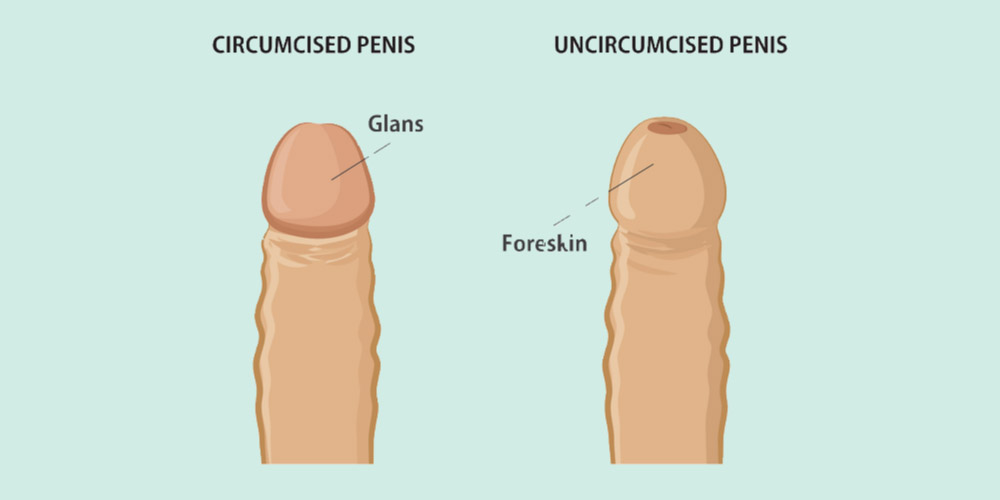![]() Views: 17,252
Views: 17,252
Types Of Phimosis
The condition of the non-retractability of the foreskin of the penis is known as phimosis. In phimosis, the patient has a tight foreskin and thus faces difficulty in pulling the foreskin back over the head of...
the penis. Phimosis is a fairly common condition in uncircumcised men. . Read moreDedicated Support at Every Step!
Our Doctors are available 24 hours a day, 7 days a week to help you!
Mild cases of phimosis do not show any phimosis symptoms in most cases. But as the condition starts worsening over time, symptoms may start appearing. You may experience swelling and pain in your penile region. Other possible symptoms include redness, itchiness, and soreness.
Phimosis can be quite a troublesome condition. If not treated properly, phimosis can lead to many other complications and problems. Phimosis can be the risk factor for conditions like paraphimosis, balanitis and balanoposthitis. It also increases the risks of urinary tract infections and sexually transmitted infections. It can lead to penile cancer and can even cause permanent damage to the penis.
You have seen how phimosis can give rise to other problematic complications. You must be wondering what are the factors that lead to phimosis in the first place.
Table of Contents
Based on the causes of the condition, phimosis is classified into two types:
- Physiological Phimosis
- Pathological Phimosis
Let’s now get an insight into the types of phimosis.
Physiological Phimosis
This type of phimosis is congenital. Congenital phimosis means that the male infant is born with a tight foreskin. This is due to adhesions between the inner layer of the foreskin and the glans penis and thus complete retraction of the foreskin becomes difficult. Physiological phimosis is very common in baby boys. According to experts, about 96 percent of the baby boys have the condition of non-retractability of the foreskin. Over time, these adhesions become weaker and the foreskin starts loosening. When this happens, gradual retraction is possible and in most cases, the problem revolves around the age of 5-7 years.
According to studies, in only 2 percent of the cases, the condition does not resolve on its own. It indicates that only a small fraction of teenagers and adult boys suffer from physiological phimosis. (Also Read: Balanitis treatment)
Pathological Phimosis
Pathological phimosis is a type of phimosis that develops as a result of injuries, infections, inflammation, scarring, and other underlying medical conditions. It can also occur due to skin conditions like eczema, psoriasis, lichen planus, etc. Such conditions make the penile skin bumpy, itchy and irritated. Pathological phimosis can appear at any age. It develops mainly due to the poor hygiene of the penile region. If you are unable to maintain hygiene properly, pathogens, dirt, sweat and dead tissues can accumulate under the foreskin. These can lead to infections and thereby cause pathological phimosis. (Also Read: Foreskin Infection)
Unlike physiological phimosis, pathological phimosis does not resolve on its own and needs proper and timely treatment. So if you were able to retract your foreskin earlier and the problem of non-retractability has surfaced now only, you might be suffering from pathological phimosis.
(Also Read: Does Phimosis Cause Trouble In Masturbating?)
Now that you know about the factors that lead to each type of phimosis, you should also know about how to treat each of these. Let’s now look at the treatment options for both physiological and pathological phimosis. (Also Treat: Paraphimosis Treatment)
No Cost EMI, Hassle-free Insurance Approval
How to treat phimosis?
In most cases of physiological phimosis, there won’t be any major symptoms other than the difficulty in retraction of the foreskin. You may not experience any pain or swelling. Such cases of physiological phimosis do not cause any discomforts and you can continue with your normal routine life without any problems. The only precaution you need to take is to maintain the proper hygiene of the penis. If you do not maintain hygiene, infections can occur and the physiological phimosis can turn into a pathological one. This can lead to severe pain, swelling and many other discomforts. So if any of these symptoms appear, it is better that you consult a specialist doctor (urologist). Mild cases can be treated using medications and creams which help in providing symptomatic relief and also loosen the foreskin.
(Also Read: Phimosis Stretching Exercises – With Images)
On the other hand, pathological phimosis has more severe symptoms. Since the causes of pathological phimosis are injuries or scarring, these tend to inflict more pain. You may experience severe swelling, redness, and soreness in the penile region. This can be a really discomforting condition. So, you should not take it casually and consult a medical professional right away. Based on the severeness of the condition, your doctor will suggest a treatment option.
Treatments Of Phimosis
Like physiological phimosis, for mild cases, medications and ointments can be effective. In addition to these, the doctor can also prescribe some antibiotics, antibacterial creams or antifungal creams if the underlying cause for the condition is of microbial origin.
Non-surgical methods of treatment are effective in reducing the symptoms in most cases of both physiological and pathological phimosis. Only in severe cases, the doctor will suggest you undergo surgical treatment which is called circumcision. If your doctor suggests so, do not avoid it.

Also, do not fret as now laser circumcision is available which is far more advanced. It is minimally invasive and inflicts minimal pain. The recovery time is faster and you can get back to your routine life in less than a week. So if you have decided to get circumcised, laser circumcision is the best option for you.
Thankfully, laser circumcision and stapler circumcision is available at Pristyn Care. Our doctors are highly experienced and can perform surgery with high precision and a high success rate. Get in touch with us today and get rid of phimosis permanently.
Also Read:










